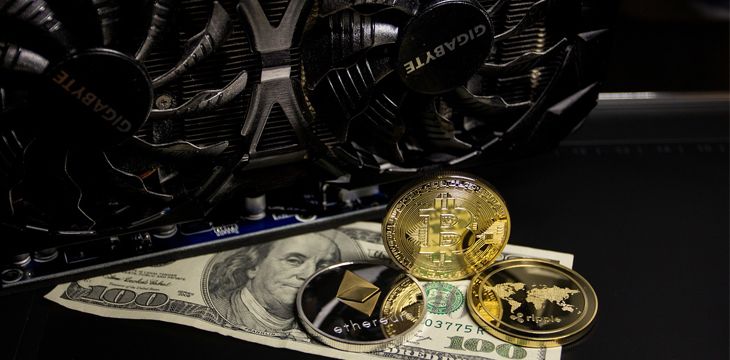|
Getting your Trinity Audio player ready...
|
As we’ve all heard by now, the U.S. government announced a $2 trillion stimulus package equating to $1,200 per adult that will go directly to the American people following the coronavirus pandemic that has setback the entire economy.
It’s an extremely loose use of the word ‘direct’ as in this critical time where small businesses are closing and unemployment rates are rising as we will likely enter a recession, it will take an absurd amount of time to be received by these people who need it most. This is due to the logistics of how it is being issued via postal mail as a check and could take months before it hits their bank accounts. Let’s not forget the possibility that checks can get lost in the mail which in itself would be an additional overhead to manage.
Bizarre dependency on outdated methods in digital era
It is hard to believe with the advancement of technology to have everything available at our fingertips instantly, the best process that is available for this situation at scale is reliant on snail mail to provide Americans with much needed relief and to stimulate the economy, but yet it will not provide neither relief or stimulation soon enough.
Depending on how long this economic downturn goes on for, it may not be the only stimulus package issued out this year and they would also be subject to the same delays faced right now.
A digital dollar has been proposed in three recent draft bills through Congress. However, it has not passed yet which would indicate the infrastructure required is not close to being developed for real world usage.
How would a stimulus relief package play out if there was a CBDC?
The introduction of a central bank digital currency (CBDC) has been in talks for years now in the United States, the only question has been how and when it will be implemented.
One important thing to distinguish is that a digital dollar does not necessarily mean the utilisation of distributed blockchain technology through the proof of work mining mechanism that Bitcoin uses. It most likely would be through the use of traditional centralised digital ledger entries maintained by the U.S. Federal Reserve bank.
Central banks technically already issue digital money through the commercial banks who take the counterparty risk and then deal with retail consumers. However, a CBDC would open up the Federal Reserve to dealing directly with regular Americans and it would become recognised as legal tender in the same way as cash is today using a digital wallet operated and maintained by the Federal Reserve. This digital wallet would be registered to an identity similar to how the social security number system works.
Monetary policy around negative interest rates could be the final step required before going digital
Discussions about introducing negative interest rates have been on the horizon for a while now as they have continued to remain low and head towards zero. Negative interest rates are a short-term solution designed to combat deflation and decline in growth in the economy by encouraging people to borrow and spend money; however, it is an artificial stimulation measure that only delays and amplifies the problem later on.
The problem with this is that cash still exists outside of the banking system which puts a strain on the entire financial system during this period.
The U.S. Federal Reserve has never imposed negative interest rates, only near zero. However, this could be the black swan event that completes the push of the world into a full digital and cashless society.
The IMF (International Monetary Fund) have conducted studies on how a transition towards truly cashless society would play out and it began with a scenario of reducing interest rates below zero and running with a dual currency during the period of traditional cash and the new form of electronic money. They would be able to create separate monetary policies and rates for both currencies that would lead to disincentivising the use of cash making it costly to hold and to convert, making the digital dollar appear more lucrative to facilitate the transition.
Perhaps this is the reason why the CBDC has not been implemented yet, but now we can see everything is falling into place for it to be introduced very soon.
The drawbacks of a CBDC can eventually be solved with Bitcoin SV
Whilst there are positives in going completely digital with a CBDC with the obvious benefit that it is more practical and functional in a technologically advanced world. And of course, in the present crisis it would provide immediate benefit for those in need to be able to receive the stimulus money to boost the economy and society as a whole.
However, there are negatives and these drawbacks are similar to the same ones faced today with standard fiat issued currency, but there are some worse aspects. This includes privacy concerns as your entire spending habits can be tracked by the same central issuing authority, there will be security concerns with unproven technical infrastructure that will be subject to various types of attacks and it doesn’t solve the issue of the inflation of currency as it can be issued at will without needing to be backed by anything.
After the transition to a completely digital economy has been completed, there will come a time to re-evaluate what the next best option which will be the tokenization of the CBDC on top of Bitcoin SV (BSV) who have positioned themselves as the clear contender to be able to handle the technologically capabilities required. This includes the leveraging off the security of the Bitcoin system through its economic incentive model, while also solving the complex issues of scalability, auditability, costs and provide efficiency towards improving the existing overheads involved with managing the issuance of fiat or CBDC.
It also eliminates the privacy concern for people being able to utilise the unique pseudonymous model to verify the identity of a wallet without revealing the identity.
Even if the central banks decided they wanted to build their own blockchain technology it might not even be a viable option, as they are already years behind on understanding the technology and having the patents required for scalability and functionality the way it was intended to work. nChain is leading the blockchain patent race with over 1,000 applications in the pipeline and are intending to use the largest blockchain patent portfolio amounted by any entity to solely benefit the BSV ecosystem.
It may not be the powerhouse countries like the United States or China that begin to tokenize their CBDC first onto Bitcoin, but whoever does so first will be able to realize the benefits that will be associated with it that could create an advantage leading to a race to the top scenario with other countries who will not want to be left behind. It will become another arm in the geopolitical battle to maintain control by any means necessary to retain dominance and be the reserve currency of the world.
This entire process will provide an opportunity for the next wave of people to open their horizons and learn about the differences between the digital currencies issued by central banks and Bitcoin.
Notably the biggest thing to consider is that Bitcoin will always be hard, scarce, commodity money that is separated from the state and absolutely anything can be recorded on top of the global ledger in a permissionless manner which includes CBDC.
The same doesn’t apply the other way around though.
To learn more about central bank digital currencies and some of the design decisions that need to be considered when creating and launching it, read nChain’s CBDC playbook.

 12-25-2025
12-25-2025 




